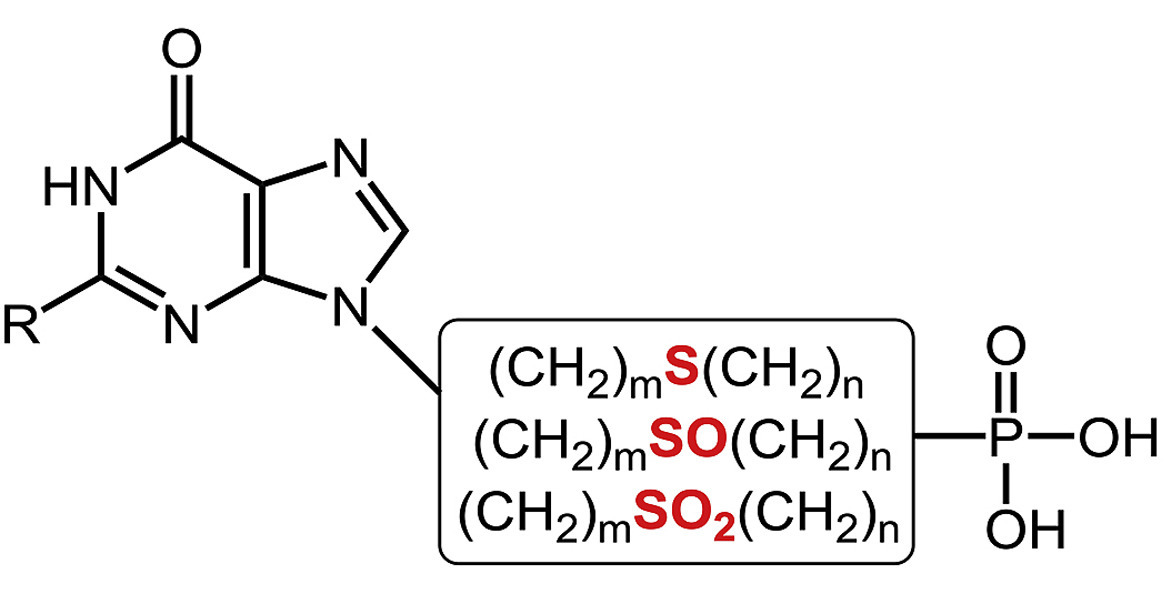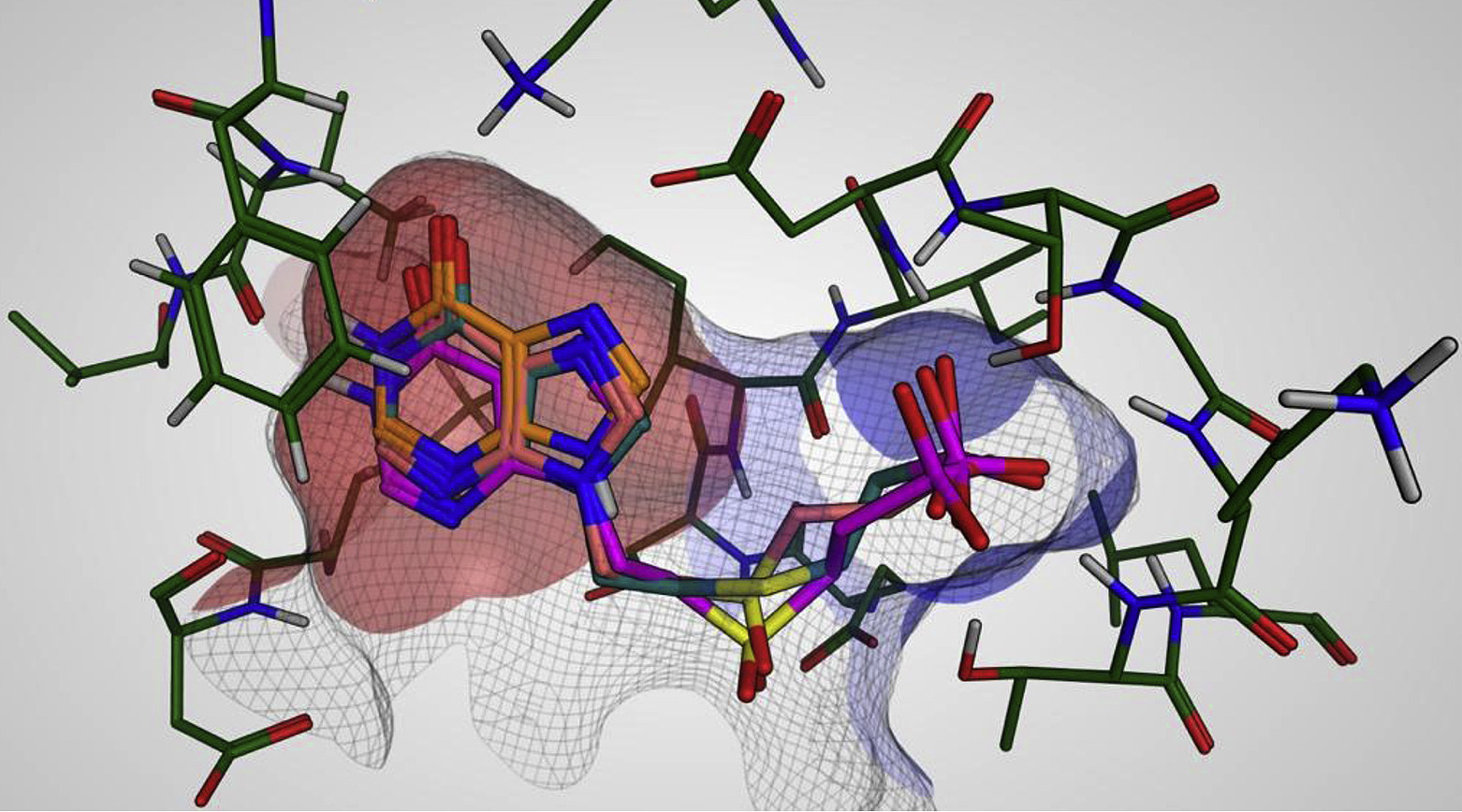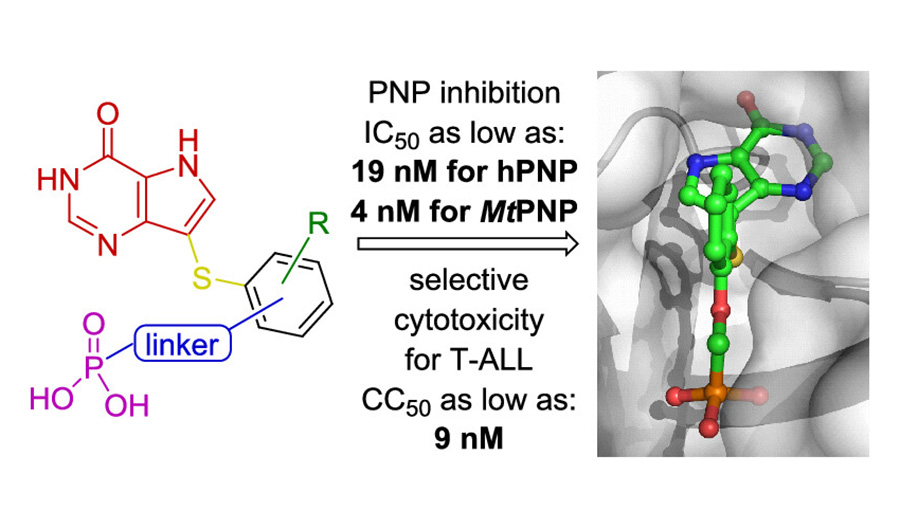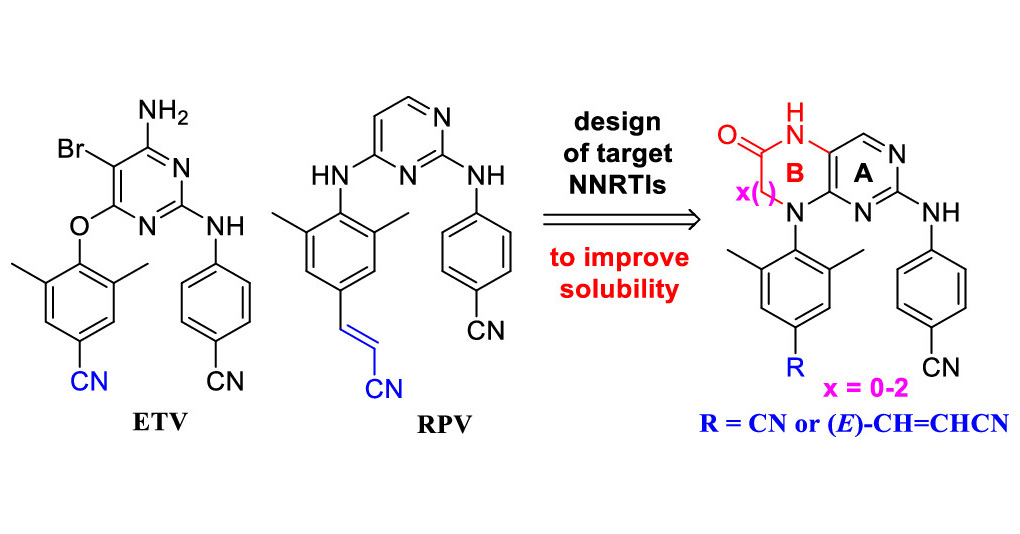
The malarial parasite, Plasmodium falciparum, is capable of developing resistance to all currently available antimalarial drugs. Therefore, new such drugs are highly sought after. One option is to target its PfHGXPRT enzyme responsible for the biosynthesis of the 6-oxopurine nucleoside monophosphates and indirectly also of the adenosine monophosphate. As such, it is crucial for the parasite’s metabolism and its inhibitors are considered potential drug candidates.
A new group of such inhibitors was synthesized and tested by the teams led by Dana Hocková from Zlatko Janeba Group at IOCB Prague and Luke W. Guddat from the University of Queensland, Australia.
Their inhibitors are based on thia-derivatives of acyclic nucleoside phosphonates and the strongest of them exhibit the IC50 values in the micromolar range while being strongly selective towards this enzyme over its human counterpart. They also were tested to be not cytotoxic for humans.
As such, these inhibitors provide excellent leads into further development with prospect of a new class of antimalarial drugs.

The original paper: Klejch, T.; Keough, D. T.; Chavchich, M.; Travis, J.; Skácel, J.; Pohl, R.; Janeba, Z.; Edstein, M. D.; Avery, V. M.; Guddat, L. W.; Hocková, D. Sulfide, sulfoxide and sulfone bridged acyclic nucleoside phosphonates as inhibitors of the Plasmodium falciparum and human 6-oxopurine phosphoribosyltransferases: Synthesis and evaluation. Eur. J. Med. Chem. 2019, 183, 111667. doi:10.1016/j.ejmech.2019.111667
Read next...






